Battersea Power Station, the Houses of Parliament, Tate Modern, Tate Britain, the Tower of London, the Globe Theatre, the Royal Festival Hall, Southwark Cathedral, St Paul's Cathedral, the Barbican, City Hall, and The Shard. There were a lot of famous destinations and tourist sights on Saturday's second stage of our Thames Path walk.
One that took us from Tower Bridge to Hammersmith Bridge via many more bridges, some of them really quite beautiful, one of them extraordinarily plain. Tower Bridge to Hammersmith doesn't sound that far and, indeed, as the crow flies it's a seven mile journey. But if you follow the curves, bends, and sweeps of the river it soon becomes eleven miles.
When you chuck in walking to a cafe at the start, and to an Indian restaurant and then a tube station at the end, that adds another mile or two. By the end of the day I'd walked a 2022 record of 24,902 steps. Which, compared to the likes of Shep (who'd clocked up over 40,000) and Pam, felt a little short. I'm sure I'd walked further. Maybe the stepometer on my phone wasn't working properly.
Certainly my hand wasn't, the dreaded gout is seriously overstaying its welcome of late, but, other than that, it was a brilliant day out and though some were struggling over the last mile or two everybody got to the end. Something that seemed in doubt at one point.
The day had began, for me, with a 63 bus from my home to the Old Kent Road. I hopped off at the bottom of Tower Bridge Road and took a gentle stroll to the Cat and Cucumber cafe (a cafe whose name seems more suitable for a nineties theme pub than a cafe) and had a can of 7-Up as I waited for the others to turn up.
Which, soon enough, they did. First Pam. Then Bee, Mo, Kathy, Adam and Shep (not happy about having had to travel via Paddington or having to go on the Circle Line). I had cheese omelette, chips, two huge doorsteps of bread, and a cup of tea. It was very tasty if a little yellow looking. Pam's veggie breakfast was far more photogenic.
Everyone left content. The Cat and Cucumber Cafe had been a good find and considering the amount of times I've been in this area in the past I'm surprised I'd never noticed it before.
On leaving, we headed up Tower Bridge Road to Tower Bridge itself. It's well known it's not as old as it looks and when it was first built (construction started in 1886 and finished in 1894) not every critic admired its Victorian Gothic style. Purists sneered at its faux appearance but the public, ever since, have disagreed and it's become one of London's most loved landmarks.
Across the river, the Tower of London is, of course, much older. When it first appeared in 1078, and for centuries after, it dominated all of London. Most of which was not far from here and most of which was in the form of little wooden houses and shops. The most iconic part of the Tower is the White Tower and it's also the oldest but other, smaller, towers were added during the reigns of Henry III (1216-1272) and his successor Edward I (1272-1307).
In 1235, Henry III received three lions as a gift from King Louis of France and this inspired the idea of a menagerie which soon extended to include tigers, ostriches, and elephants. By the 19c too many of these animals were escaping (and, presumably, scaring the shit out of flabbergasted Londoners, you don't expect to see a tiger in Tower Hamlets) so they were moved to the newly built London Zoo.
All except the ravens who, as you probably know and as legend has it, should they escape from the Tower London will fall. The Tower's been used as an armoury and a gaol as well as a zoo. During its time as a prison it hosted infamous inmates like Guy Fawkes and Walter Raleigh. There is also, of course, the famous story of the two princes imprisoned in the Garden Tower, now known as the Bloody Tower. Sons of Edward IV, they were kept captive by his brother Richard III after he made himself king. Rivals to the throne were best, in those days, locked up.
On our side of the river stands City Hall. The mayoral office, though soon to be replaced - Sadiq Khan doesn't seem as keen on it as Boris Johnson was, built by Norman Foster around about the turn of the millennium. This stretch also sees HMS Belfast (a Royal Navy cruiser that saw service in World War II and is now run by the Imperial War Museum as a visitor attraction) and the attractive Hays Galleria where my ex-employees, and Pam's current ones, PRS For Music have their office these days
Steep, and slightly wonky, steps take you up on to London Bridge and, on the other side, Nancy's Steps (named after a character in Dickens' Oliver Twist who was murdered there) take you down to the edge of Southwark Cathedral and it was here that I decided to read some of the spiel from Phoebe Clapham's trusty tome, Thames Path in London. The book that is our bible for this part of the walk.
Not everyone was interested as I read about Walter Raleigh who once said, presumably before he was imprisoned near here and definitely before he was executed, that "there are two things scarce matched in the universe. The sun in Heaven and the Thames on Earth". It's even written on a wall that overlooks the river and takes in views of the rather unimpressive, certainly compared to Tower Bridge, London Bridge.
The old London Bridge, or bridges, have stood here since the end of the 12th century and there'd been basic wooden ones even before that. The first really famous one though was the one you see in old drawings. The one that had houses, shops, a chapel, and even ale houses on it. A drawbridge was pulled up at curfew each evening meaning that if you'd been carousing around the inns, theatres, and bear pits of Southwark for too long you'd need to pay a waterman to ferry you back home across the river.
A gatehouse displayed, in a style that would later be copied by ISIS, the severed heads of traitors. A gruesome tradition that began with the head of Scottish leader William Wallace in 1305. Less grisly, the bridge had nineteen small arches and several waterwheels meaning that the water would be forced to slow down to pass through it.
This resulted in the river often freezing and gave way to the long gone frost fairs which sound like they were lots of fun - although very cold fun. When Old London Bridge was demolished in 1831 it was replaced by a handsome new bridge built by John Rennie the Elder and his son John Rennie the Younger. That bridge eventually developed cracks and was sold, wholesale, and rebuilt in Lake Havasu City in Arizona where it, bizarrely, stands to this day.
The modern bridge is practical, well used, and, quite frankly - compared to others nearby, fairly ugly. In 1014, when King Olaf of Norway tied ropes to one of its predecessors and then used his boats to pull it down, the children's song London Bridge Is Falling Down was created to mark its passing. Should a new London Bridge appear in the coming years it seems unlikely anyone will be sad to see this one go.
With views to the UK's tallest building, The Shard, in the background, Southwark Cathedral looks pretty small in comparison but makes for a nice juxtaposition. Southwark Cathedral, originally the Augustinian priory of St Mary Overie, was built in the 13th and 14th centuries and is one of the earliest examples of Gothic architecture in London. Inside it are tombs to John Gower (Poet Laureate to Richard II and Henry IV) and Lancelot Andrewes (former Bishop of Winchester and translator of the King James Bible) as well as a Shakespeare monument.
William Shakespeare is buried in Stratford-upon-Avon but his brother Edmond is buried here! There's also a monument to the 51 victims of the Marchioness disaster of 1989 when that pleasure boat collided with the dredger Bowbelle on the river nearby.
The sights were coming thick and thin. We passed the replica of the Golden Hinde (Francis Drake circumnavigated the globe in the original between 1577 and 1580), the last remaining wall of the former Winchester Palace, the site of the original Clink prison, Vinopolis, and a man playing a tuba with fire coming out of the end. You'll easily guess which of these had drawn the largest audience.
The Anchor Bankside was already getting busy but it was far too early for us to make a pub stop so we continued on past the Globe Theatre, the Millennium Bridge, Christopher Wren's old house (looking across to his masterpiece, St Paul's Cathedral) and Tate Modern. The world's most visited museum/gallery and one I have certainly visited, and wrote about, many times.
Tate Modern was once Bankside Power Station, although I have no memory of the building from before its time as Tate Modern - surprisingly. Designed and built by Giles Gilbert Scott between 1947 and 1963 it pumped out horrific fumes and polluted London for three decades until 1981 when it closed down and then sat unused, and unloved, for nearly twenty years. Quite a life story. Quite a turnaround.
The little beach near The Founders Arms was being well used on a pleasantly sunny March day and we passed through Blackfriars station and under Blackfriars Bridge. With noticeably more success than Roberto Calvi. The Italian banker and chairman of Banco Ambrosiano who, in 1982, was found hanging from the scaffolding beneath the bridge.
He'd been linked to fraudulent dealings with the Vatican and the crime/murder was never solved but to add a layer of intrigue, or perhaps pure coincidence, he was a member of a Masonic order called 'frati neri'. In Italian, 'black friars'.
We passed Sea Containers House, the Oxo Tower, the lively bars and restaurants of Coin Street, and after the powerful Brutalism of the National Theatre and the South Bank buildings (read about them in my Brutalist blog), we came next to Waterloo Bridge. The scene of another unusual, and unpleasant, murder.
In 1978, the Bulgarian dissident Georgi Markov was killed by a ricin pellet fired into his leg by an umbrella specially adapted by the KGB. Interestingly, and topically, that's during the time that Vladimir Putin was working as a KGB agent.
More pleasantly, Canaletto draw the bridge and Wordsworth wrote a sonnet about it. There's also lots of nice statues, some of them living, and the ever popular second hand book market nearby as well as a carousel and a man spinning a plate high in the air. The London Eye looked as fab as ever and we took time to ponder the fate of the former GLC building. Closed down by Thatcher, it now stands as an aquarium and a Shrek themed attrraction!
Some of us stopped for a shag and others took in the heavily graffitied concrete skate park which has, quite remarkably, continued to exist even after all this gentrification. In fact, it's long become a tourist attraction in its own right.
As soon as you pass under the dark and, seemingly always, wet tunnel under Westminster Bridge the crowds start seriously dwindling. It seems apt that the National Covid Memorial Wall should look across the river to the Houses of the Parliament as many in that building, especially the PM himself, are responsible, indirectly, for our nation's horrendously high death toll.
Reading the messages, and nobody could have time to read them all, is deeply affecting. Seeing the scale of them is mind boggling. I was particularly touched by the memorials to two grandparents who died within a week of each other and Rhiannon's message 'to Grandad. Thank you for the treats, trips out, and being the best ever" is enough to melt the steeliest of hearts.
There's also some righteous anger, correctly, at the Tory party who presided over our initially disastrous Covid policy as well as a truly misguided tribute to Prince Philip who didn't even die of Covid. It seems appropriate that they couldn't even spell his name correctly.
We continued along, past Lambeth Palace and Lambeth Bridge, and soon found ourselves outside the Tamesis Dock. A floating pub that looks across to Tate Britain and the Millbank Tower. I'd been walking towards the back of the group and by the time I'd got there a decision had already been taken that we'd stop for a drink here.
I wasn't going to argue. We were soon joined by two new walkers, Eamon and Yvonne, and I took a pint of Goose Island and sat in the afternoon sun watching the waterfowl frolic in the Thames below and boats cruise quietly towards Westminster via Lambeth Bridge (whose red hue was designed to reflect the colour of the seats in the House of Lords). It's a pleasant, and much less hectic, stretch and it seemed apt to read up, and out loud, a bit about Joseph Bazalgette and the creation of the Embankment.
In 1848 and in 1853 London was hit by horrific cholera epidemics and thousands of people died puking and shitting. It was believed, wrongly, that the disease was spread by 'miasma' and with the Thames at that time basically an open sewer many saw it as the prime culprit.
It wasn't, of course, until the smell reached Parliament in 1858 that anything was done though. Bazalgette, then chief engineer of the Metropolitan Board of Works, was tasked with solving the problem. Which he, famously, did. By building over two thousand miles of sewage pipes underneath London. These would drain out downriver at Beckton on the north and Crossness in the south.
Powered by large, and architecturally rich Italianate, pumping stations at Abbey Mills and Deptford. By doing this, and with the tube being built at the same time, the Embankment was created, the Thames pretty much stopped flooding, and the face of London was changed, for the better, forever.
Suitably refreshed after our stop at the Tamesis Dock, and feeling happy enough to laugh off Shep's ludicrous accusation that I was once seen 'punching the air' to Deacon Blue's Real Gone Kid at Glastonbury, we continued along, and briefly away from the river, to Vauxhall Cross.
Past Jeffrey Archer's penthouse flat (which opened while he was still in prison), the Vauxhall Gardens (read about them and London's other pleasure gardens here), the MI6 building, and the imposing new high rises of the area we gasped in awe at both the vertigo inducing aspects of, and the spectacular flaunting of wealth it represents, a swimming pool suspended high in the air between two new, and expensive looking, high rises.
I don't think I'd be up for a swim in that - but then again it'd be an experience. The new US embassy stands nearby and the best that can be said for it is that Donald Trump hates it. Mandy, the dog on wheels, who passed us by didn't seem interested in the architecture of the area but we were.
The centrepiece of this extraordinary huge regeneration scheme is, of course, Battersea Power Station and now the station (with its attendant new tube station, Battersea Power Station station, seriously) has been cleaned up it looks even more impressive than ever. Even if a Pink Floyd pig flying over it would have been the final touch.
It's not easy to navigate your way through though. Building work means many roads and paths are closed so it takes a while, and a few wrong turns, until you get to the power station, and the riverfront, itself. More than Bankside, Battersea Power Station is one of London's most well known and best loved buildings and has been for as long as I can remember.
It wasn't always that way. Seen as a 'polluting eyesore' when it first opened in 1933, nearly three decades after the nearby Lots Road power station, Giles Gilbert Scott's (him again) Art Deco touches and Italian marble turbine hall turned heads but it's those huge chimneys, like an upturned table, that really became the trademark of the building.
It closed down as a power station in 1983 and for my entire adult life, until very recently, it has stood empty. Time and again, there's been talk of converting it into theme parks, hotels, and luxury complexes but it wasn't until nine years ago when a Malaysian consortium took it over that things started moving. There are shops, eateries, bars, and, obviously, luxury apartments open now but it still seems a bit anonymous. Time may well change that.
We'll see. When you reach Chelsea Bridge the terrain changes completely. You find yourself, as we did, in Battersea Park. The only major London park that comes right up to the river and a very pleasant one at that. It's the site of the first ever football game played by the rules of the newly formed Football Association (FA) in 1864 but it's probably best known for its peace pagoda which was completed in 1985 by nuns and monks of the Nipponzan Myojohi Buddhist Order and now attracts Buddhists from all around the world.
Battersea Park takes you all the way from Chelsea Bridge to the rather splendid Albert Bridge. A bridge that was celebrated in song by The Pogues and one that looks even more delightful at night when illuminated by four thousand low voltage tungsten halogen bulbs. Troops, however, must break step when marching over it.
Presumably on their way to, or from, the nearby Chelsea Barracks. There's a lot of interesting statues along this stretch and, just after Battersea Bridge (built in 1885 and painted by both Turner and Whistler), we passed St Mary's Battersea where William Blake got married (which you can read about in my account of my William Blake themed walk back in 2019).
There's lots of old boats on the muddy shores of the Thames, as well as London's only dedicated heliport, but the most surprising sight was the former Speaker of the House, and now disgraced bully, John Bercow walking the other way, talking into his phone. Once a selfie may have been in order (see what I did there?) but it didn't seem such a good idea in the wake of recent revelations about his behaviour.
Some needed a wee, and some needed a sit down, so we decided to stop at a pub. The Ship in Wandsworth has character but tends to get rammed (which it was, full of very noisy rugby fans watching England getting beaten by Ireland at Twickenham in the Six Nations) so we repaired to the more spacious, but still full of rugby fans, Waterfront.
A Young's pub with huge lightshades. I had a pint of Young's London ale and nursed my now very sore hand as people chatted amiably around the table and went to the loo. The toilets were up a few flights of stairs so that contributed to the daily step count.
Leaving the pub, and with roughly an hour of the walk to go, we passed Wandsworth Bridge (covered up! Was Christo in town? Unlikely, he died in 2020) and the confluence of the Wandle and the Thames (you can read about in my account of a Wandle walk last year) before coming to the 'Riverside Quarter' (yet more luxury flats) and, after Putney Bridge, moving into rowing country.
It's where the boat race begins each year and the southern bank of the Thames is full of boatyards. Often you can see rowing teams putting in the hard yards in the river and on Saturday that proved to be so. I was more interested in a couple of swans though.
Near where the Beverley Brook (a potential future walk) spills out into the Thames, and by some fairly lively yet pleasant looking pubs, a few police were sorting through what appeared to be some evidence on the banks of the river. A friend joked that they might have been filming The Bill but the lack of cameras, or film crew, suggested not.
As we moved into twilight we passed by Fulham's stadium Craven Cottage, now without the Michael Jackson statue that once stood in front but soon, surely, to host Premiership football again (as Mo put it, Fulham lead the Championship by a "country mile").
Funnily enough, the next stretch would be just that - almost. Passing along the side of the river with the London Wetland Centre to our left inland it felt like we weren't even in London. As long as we didn't look across the river to the tower blocks on the other side that is.
Interestingly, for me at least, there's an abandoned looking former Harrods Furniture Depository tucked into the rural ride we were taking. Red brick and terracotta in what Phoebe Clapham described as a "demented Baroque style" it was built to house furniture that was too big to fit in the store itself.
Soon we reached Hammersmith Bridge. Built in 1877 by Joseph Bazalgette, it's another favourite of mine and even more so since motor vehicles have been banned from using it. Truth be told, Hammersmith is an area of London I am very fond of. From gigs at the Clarendon, the Palais, and the Odeon to theatre nights at the Lyric and the Riverside and various veggie eateries it's rarely disappointed me.
The stretch, and bend, of the river is pretty too but we gave the riverside pubs a miss, passed under the concrete flyover, and, after saying goodbye to Kathy and Mo, had another beer in The Swan. It was the turn of the football fans now and Man Utd were beating Spurs 3-2 c/o a Cristiano Ronaldo hat-trick.
From there it was a short walk to Sagar for South Indian Vegetarian Cuisine. I had dahi vada (lentil doughnuts dipped in yoghurt, delicious and like having a naughty dessert before the main course) and a tasty, if perhaps unimaginative, cheese dosa. Shep's meal looked like a bowl of cereal and other diners remarked on how tasty the brinjal bhajee was as we downed Kingfishers and Cobras.
That was pretty much the end of the day. After we'd finished I took the tube to Victoria, another to Brixton, and the P4 bus home and reflected on what had been a lovely day's walking with lovely people and lovely food and drink. Next time we'll meet in Hammersmith and head down to Teddington. This project seems set to become more enjoyable as it continues but Saturday was defnitely a very good day. Thanks to everyone who was part of it and special thanks to Bee, Pam, and Shep for the photos, and maps, that I've used in this account of it. One that I hope captures not just what the day looked like, but how it felt.










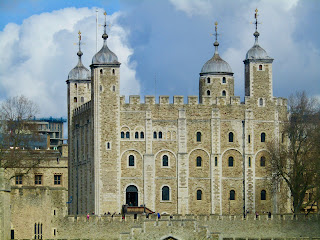










































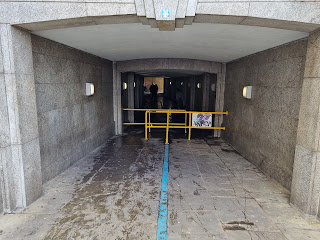













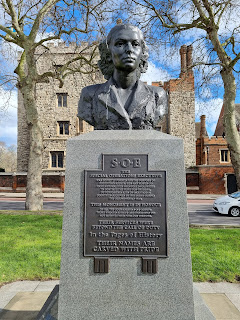































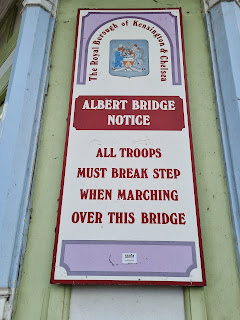









































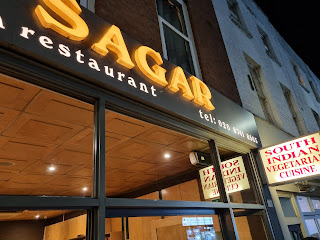





No comments:
Post a Comment